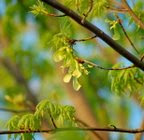Right now we are discussing Modern Architecture and Post Modern Architecture and how it has shaped our current urban fabric. I am really surprised at the amount of people that seem to support Modern Architecture. I guess in my personal quest for "place" I have realized the absolute destruction that Modern Architecture has done to "place". International Style or Modern Architecture has washed white cultural imprint, regional identity and most anything human. It is not even to human scale.
I was watching a piece on Post Modern Architecture by Prince Charles. I was struck by his mention of the church as the living, beating heart of a medieval city in Italy still to this day. It seems the current trend here in Oklahoma is to use steel constructed churches with metal cladding. The closest we get to the beating heart of a city is at its edges with strip malls and big box stores that morph into churches when their retail life is over.
It is hard for me not to be passionate about this subject. I really believe that Modern Architecture and the whole stylistic philosophy that followed help destroy our downtowns and main streets. I'm not saying that it is solely responsible, but it is responsible for many of the repugnant spaces in our cities. I am not an advocate for another revival of Classical or Gothic architecture, but I am an advocate of architecture that responds to people.
This is a subject that I am continually drawn too. I confess I love Louis Sullivan's work. Look a the Guaranty building and the Wainwright building. Look at Sullivan's attention to craftsmen ship and detail which are important for the character and interest of the building. Notice how he addresses the sidewalk . These buildings build a human scale relationship with the street. They are bringing a ten story plus building down to the scale that we can understand and relate too.
I'm not sure that this is where we should be going in architectural design, but I do believe that there is great value in these buildings and other Sullivan work that we should be studying more. I'm not sure that Sullivan really addresses "place" in this, but he does reach out with spirituality and nature. Organic forms and more human forms are woven into a very square, efficient money making box.
Well, I need to go to bed. I just couldn't sleep without getting this off my chest. The world needs to know and be passionate about bad design. I encourage all to speak out against it. It is not a time to be polite and hesitant. Ask the pertinent questions. "Is it meaningful?" "Is it beautiful?" "Does it fit in my neighborhood?" "Does it speak of my community?" "Does it provide a better life for the user?"





 I got my View, Summer 2007 edition in the mail this week. It is from the
I got my View, Summer 2007 edition in the mail this week. It is from the 
















